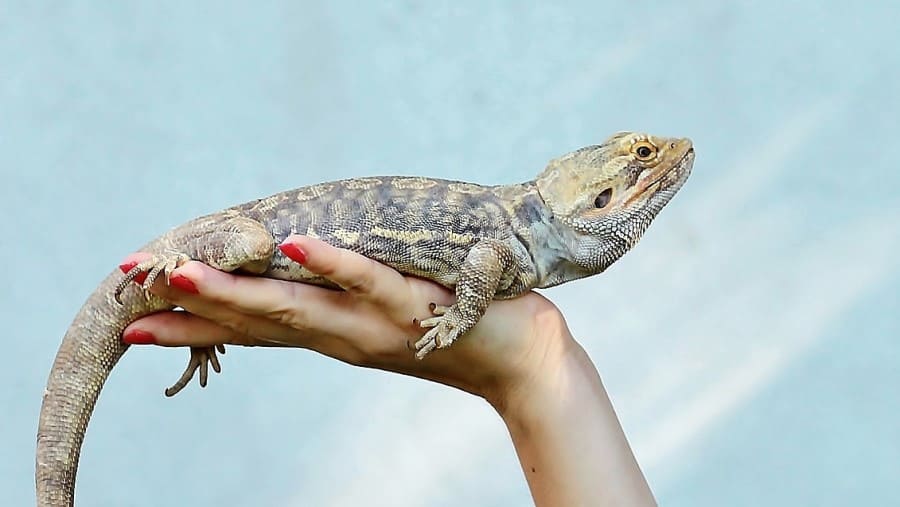
Bearded dragons’ tail is superlatively long and gripping and sometimes, they even curl them. Opposite from their feet, their tail actually contributes many more functions to their body. In the next few points, we’ll uncover every possible reason why bearded dragons curl their tails.
Bearded dragons will curl their tail to express their moods, from being snoozy to being defenseless. It is also to physically gain more control and balance their body. A curled tail indicates mood changes and a sense of readiness, whether for sleep or for a battle. They play a role as the fifth foot to stabilize their body.
A bearded dragon’s feet don’t contribute much to their body. Thus their tail holds most of the work, to be the leading indicators and the base of their balance.
Rather than just sitting still and looking pretty, their tail functions as the primary communicator and an indicator. Without them, bearded dragons might not be able to perform half of the tasks they do daily.
Reasons for Bearded Dragons to Curl Their Tail
Threatened
Being in a deathly situation that threatens their lives or their families, bearded dragons would curl their tails tightly. This is to tell their opponent that they are ready for a battle and to indicate their inclination to fight.
They will clench their tail in as tight as a coil instead of leaving them around in an idle state which will be a spot more comfortable for their opponent to attack.
Uneasiness
Uneasiness is almost the same as the scenario of being threatened. Only that the sense of being uneasy emerged when bearded dragons grew suspicious over the safety of their environment.
They’ll curl their tails in when they detect danger that’s approaching them. Preparing themselves for the upcoming hazard.
Sleeping
As they fall deep asleep, leaving their tail hanging and swaying freely off the branch is never their option. Bearded dragons will curl them tightly into a ball, for the fear that hunters or predators at night will catch their tails.
If their tails were left idle, predators who are hunting down for light snacks at midnight might nab on their tails. On top of that, curling their tails also make them smaller which is harder for predators to spot.
Resting
The same goes for resting, not necessarily deep asleep and unconscious but just to loiter around. Resting somewhat makes bearded dragons lose their focus and sense for a little while.
Thus, the same goes for falling asleep, they’ll curl their tail for the fear that they might not save them from the nabbers in time. Curling them in is a favor to keep them out of harm’s way.
Balancing
Bearded dragons have different weights on different parts of their bodies, which imbalanced their figure. They will curl their tails to the tree branch they’re sitting on to prevent them from falling out of imbalance.
It acts like a hand holding onto the branch by coiling its tail around it while all four of their legs sit still on the branch.
Gripping
We don’t really see chameleons grabbing or holding things with their cute little legs, do we? This is because all those gripping, holding, and grabbing on things are all done by their tails.
It explains why their tails are brawny and elongated. One of the main jobs of their tails is to grab food or snacks because their tail has a better grip than any other parts of their body.
Conclusion
Next time you see your bearded dragons curling their tails, it might indicate uneasiness or just getting ready for their sleep. Moreover, they’ll also curl their tails in if they sense danger.
However, if you see their tails curling tightly onto a branch, they are trying to balance out their body. Therefore, keep an eye on your bearded dragon’s tail as it plays many roles for them daily.
Keep them out of harm and major dirt as bacterial infection may cause tail rotting. The worst-case scenario is that it will lead to tail amputation and they won’t be able to use their tails habitually.


